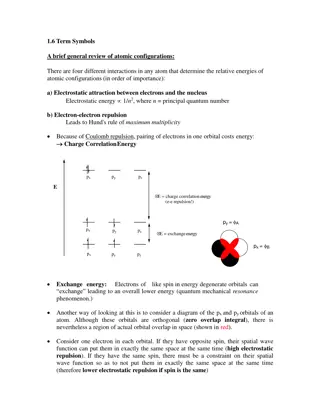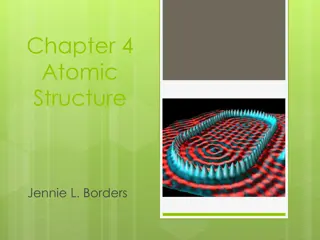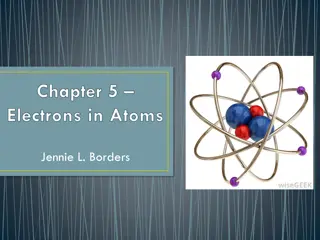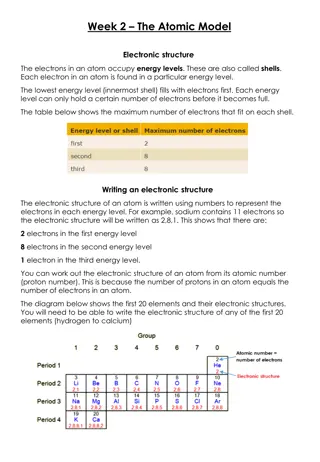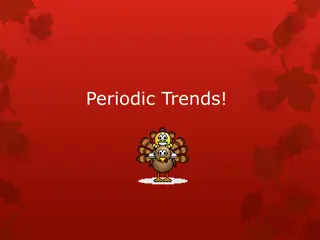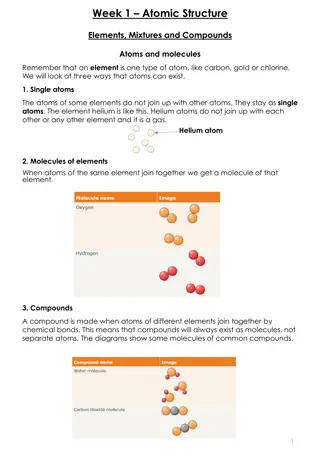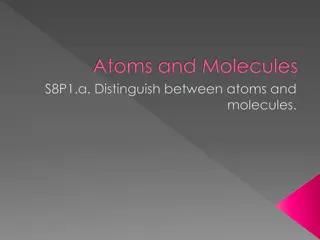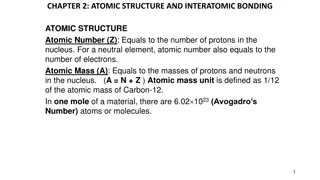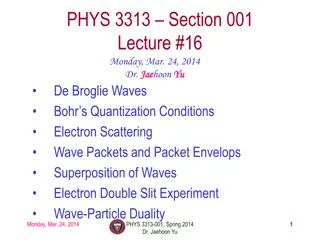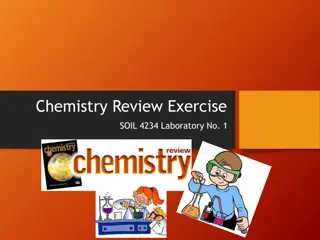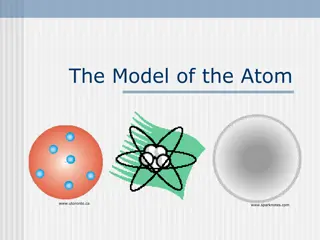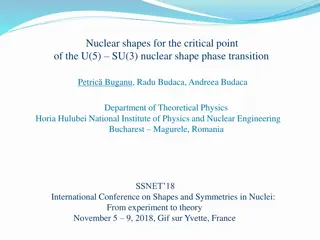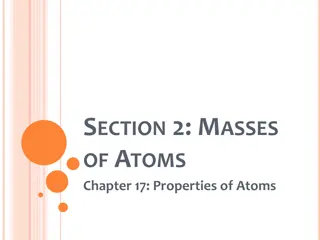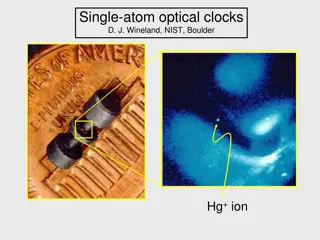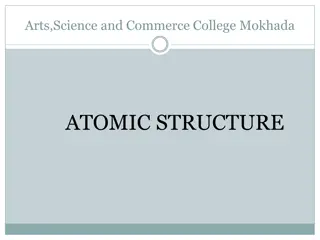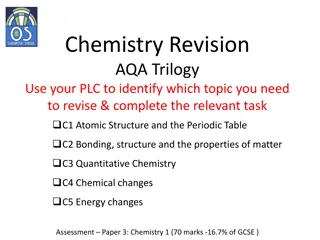
Chemistry Periodic Properties and Atomic Structure Overview
Explore the periodic properties of elements, including alkali metals, transition metals, halogens, and noble gases. Discover the differences between metals, nonmetals, and metalloids, and learn about the states of elements in nature and their distribution. Dive into the fascinating world of chemistry!
Download Presentation

Please find below an Image/Link to download the presentation.
The content on the website is provided AS IS for your information and personal use only. It may not be sold, licensed, or shared on other websites without obtaining consent from the author. If you encounter any issues during the download, it is possible that the publisher has removed the file from their server.
You are allowed to download the files provided on this website for personal or commercial use, subject to the condition that they are used lawfully. All files are the property of their respective owners.
The content on the website is provided AS IS for your information and personal use only. It may not be sold, licensed, or shared on other websites without obtaining consent from the author.
E N D
Presentation Transcript
Chemistry Dec 3, 2019 P3 Challenge- Pick up 4 handouts Name an alkali metal. Name a transition metal. Name a halogen. Objective Periodic Properties Atomic Structure
Chemistry Nov 28, 2018 Objective Agenda Periodic table: Properties Periodic properties Atomic Structure / Bohr Model Metals/nonmetals Atomic Structure / Quantum Mechanics More about elements Assignment: Bohr Model Worksheet, Atomic Structure Worksheet Atomic Structure overview Bohr Model Orbital Shapes Atomic Structure Quantum Numbers
Elements within a Group share Chemistry Periodic Law Alkali metals (Group 1) are soft enough to cut with a butter knife, react with water, form strong bases Alkaline earth metals (Group 2) are similar to alkali but less reactive with water and harder. They also form strong bases. The halogens (Group 17) form diatomic molecules and vary in states down the group from gases to solids. They are nonmetals and react with metals to form salts. They react with water to form acids. The noble gases (Group 18) are unreactive and exist as gases.
Metals / Nonmetals / Metalloids Differences between metals and nonmetals tend to revolve around these properties. Metalloids have some properties from both lists.
States of the elements Everything on this slide is a memory item. Most elements are solids. There are two liquids: Br2 and Hg There are 11 gases: H2, N2, O2, F2, Cl2 , He, Ne, Ar, Kr, Xe, Rn There are 9 molecular elements H2, N2, O2, F2, Cl2 , Br2, I2, S8, P4 All others exist as individual atoms.
Distribution of elements in nature 98 naturally occurring elements (1 98) 93 98 only in small amount added recently, so most people say 92 60 elements used in the human body 6 most common make up 99%: O (65%), C(18%), H(10%), N, Ca, P 5 significant ones make up 0.85%: K, S, Na, Cl, Mg Trace others: Fe, F, Zn, Si, Rb, Sr, Br, Pb, Cu Al, Cd, Ce, Ba, Sn, I, Ti, B, Se, Ni, Cr, Mn, As, Li, Hg, Cs, Mb, Ge, Co, Sb, Ag, Nb, Zr, La, Te, Ga, Y, Bi, Tl, In, Au, Sc, Ta, V, Th, U, Sm, W, Be, Ra Most abundant in universe: H (74%), He (24%) Most abundant for earth: Fe (32%), O(30%), Si(15%), Mg(14%), S, Ni, Ca, Al Most abundant for earth s crust: O(47%), Si(28%), Al(8%), Fe(5%), Ca, Na, K, Mg
Review Atomic models Recall the Nuclear model and where subatomic particles are located Recall the Bohr model that uses quantized orbits Recall Quantum Mechanics that uses quantized orbitals Orbitals that we draw represent a 95% probability of finding an electron in that space. Any single orbital can contain up to two electrons (0, 1, or 2)
Bohr Model Based on x ray spectra line data Electrons located in nested shells located in specific quantized orbits Shells given labels from Xray spectra: K, L, M, N. Each shell can hold only a given number of electrons: K 2 electrons L 8 electrons M 18 electrons N 32 electrons The build an atom app used an unlabeled Bohr model.
Example Draw the Bohr model for the most abundant isotope of Phosphorus. From Periodic Table Z = Gives #p and #e for neutral atom. Find most abundant isotope mass number, A = on list of abundances. A Z Determine #n. Draw a nucleus for the neutrons and protons. Label. Draw a circle around the nucleus for K. Place up to 2 electrons on this orbit. Draw a circle around K for L. Place up to 8 electrons on this orbit. Continue with M and/or N with 18, and 32 electrons, until all electrons used.
Exit Slip - Homework Exit Slip: Draw the Bohr Model for Oxygen-16 What s Due? (Pending assignments to complete.) Bohr Model Worksheet What s Next? (How to prepare for the next day) Read Holt p84 - 88

